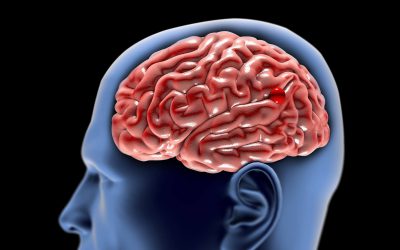Back pain is probably one of the most common complaints that anybody has in their life. They usually say the two most common complaints patients can have in their life are headache and back pain. Some people really suffer from just intolerable back pain and then the question is what if anything needs to be done about it? The first answer is surgery should not be at the top of the list. If you have back pain, the first thing to do is to start thinking about simple things that you might do to improve your back mechanics. A big thing is how much do you weigh? I often tell patients that if I asked you a hold of bucket of water out here, after a few minutes of time, your shoulder’s going to start to hurt from carrying this bucket. If I then told you that you needed shoulder surgery to make the pain go away, you’d think I was crazy. You’d tell me, no, let me just let go of the bucket. Well, if you have a big belly or heavy chest, that all puts pressure on your spine, so you’re asking your spine to do a lot of work and then your spine complaints, you have back pain. The first step to dealing with back pain is looking at yourself and asking, what can I do to make things better? Walking is great exercise, swimming can be a great exercise, but I really like walking because it’s so simple to do. If it’s inclement weather, I tell people go for a walk in the mall. If your back’s hurting so much that it’s hard to walk, do small walks and work up to it. As you walk, you’re strengthening the muscles of your back, and as you walk you’re burning calories–both of which can positively impact the health of your back.
When is back pain a bigger issue? Well, when it’s getting worse, no matter what you do and in particular, if it’s associated with shooting pain into the leg. The shooting pain into the leg is not just the back being sort of cranky, it’s the nerves that are coming out of the back being pushed on and that’s when the back degeneration really becomes a big problem. Still, even if you have a big herniated disc, and we’ll talk about that in a second, but even when there’s a disc pushing on a nerve, the majority of people can get better with simple things like physical therapy and maybe some anti-inflammatory medicine, what we call non-steroidal, anti-inflammatory drugs–Ibuprofen or Motrin is a common name used. Also, Naprosyn, or the common name Aleve are drugs that block inflammation and can be very helpful. These drugs can have a difficult side effects in particular on your stomach, causing irritation or even bleeding, so you shouldn’t just start this on your own without talking to a doctor. But even if you have a big herniated disc and a lot of degeneration of your spine from arthritis, the majority of patients can get better with therapy and anti-inflammatory drugs, and sometimes some modestly invasive procedures like epidural steroids and things of that nature.
So again, the rush to surgery should not be indicated. There are fancy words to describe this, that people often stumble upon this Spondylosis, which is sort of a fancy word for saying, you know, arthritis and degeneration of the spine. Then another one you might hear Spondylolisthesis and that refers to two parts of the spine slipping in relation to each other. So your bones of your spine are held in relation to each other by the joints in the back called facets and the discs in the front, so it’s that sort of triangle of material holds the spine together. Well, if the discs degenerate or the facets degenerate, then there can potentially be some emotion that’s not appropriate and that’s the Spondylolisthesis. Another thing I ask patients to do is look at your knuckles. Most of us, if we look at our knuckles, they don’t look like they did when we were 20 years old or younger. As we get older, they get bigger and they get gnarly and the same thing is happening with the joints in your back. So when they get gnarly, they get a little bit sloppy and they also, as they get bigger, they can potentially push on the nerves and that can cause the shooting pain into the legs and the gnarly joints can cause some back pain.
Again, surgery should be the last choice for fixing these things. Far too many people have back surgery who probably shouldn’t. One of my colleagues who’s highly respected was quoted in the New York Times saying, “50% of spine surgery may not be warranted.” So typically, if I’m referred a patient with a back pain and it’s just back pain, even if the back pain is terrible, the surgeries to treat back pain have a low success rate comparatively to the other surgeries I perform. Sorry, I want to be very cautious before I offer such a surgery and usually I will get imaging to better understand what’s going on with the spine. In some instances, I will identify that the spine is moving improperly and it’s slipping. That Spondylolisthesis. If a person is slipping a lot and it’s causing them a lot of pain, I still will try some physical therapy because sometimes the strengthening of the muscles back there can make up for those sloppy joints, but if that ultimately fails, a lot of those patients can be helped with something called a spinal fusion. There are a lot of different ways we can do this, some more minimally invasive than others, but the goal is to take two parts of the spine that are moving improperly in relation to each other and to kind of fix them together and get the bone to grow across between them, so that they no longer can move in relation to each other. By then not being able to move in relation to each other, they won’t pinch the nerves, and other things, and cause pain.
Then an important thing in sorting this all out though, is to remember that if I take one hundred people walking on the street who feel totally fine and don’t have any back pain and don’t have any leg pain, and I look at their spines with CTs and MRIs, of those one hundred patients, 50% of them will show significant changes in their spine. So it’s really, really important to examine the patient, listen to the history of the patient, and figure out what’s going on with them from a pathophysiology perspective and try and match that to the pictures. If you just treat pictures, you’re going to do a lot of surgery and only help a small percentage of patients.
Please note, the information provided throughout this site is not intended or implied to be a substitute for professional medical advice, diagnosis or treatment. All content, including text, graphics, images, and video, on or available through this website is for general information purposes only. If you are experiencing relating symptoms, please visit your doctor or call 9-1-1 in an emergency.
Read More from Dr. Charles Rosen
Multiple Aneurysms: Emilia Clarke
I'm getting a lot of questions these days about aneurysms and Emilia Clarke, the game of Thrones star, and the unusual aspect of her history is to having multiple aneurysms that needed care, so I wanted to talk a little bit about how often we see that. The...
read moreBrain Eating Amoebas
Last year I got asked a lot about the terrible tragedy related to the brain eating Amoeba or brain eating bug as it's called in the press. First off, these are relatively uncommon. They are horrific when they occur, but they're not common. What it is, is...
read moreHeat Stroke
With the temperature increasing, as a motorcyclist, I'm very aware of the issues of heat exhaustion and heat stroke, and these are very dangerous issues. Our bodies need to stay at a standard temperature (98.6 degrees Fahrenheit, 37 degrees Celsius), and...
read more



